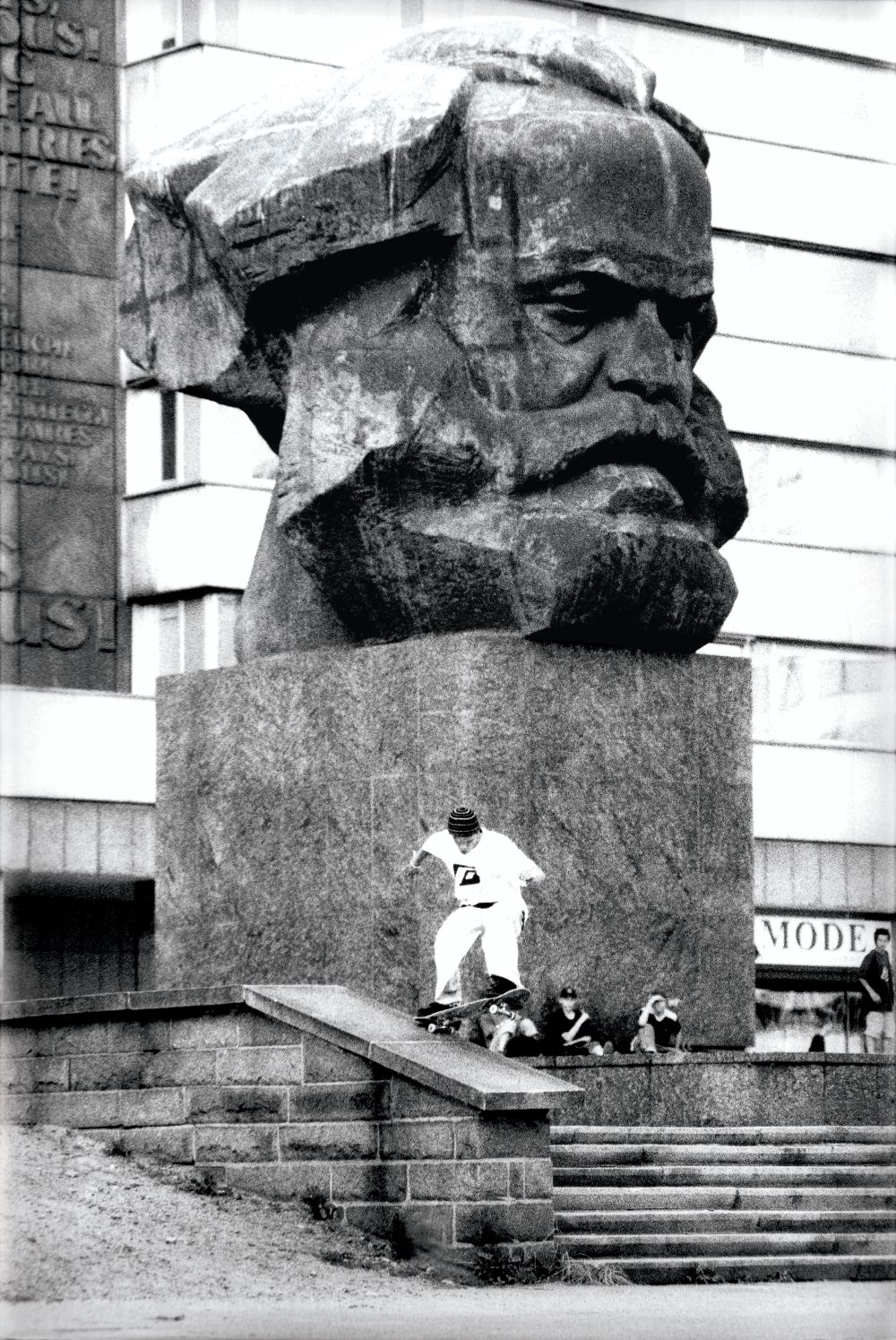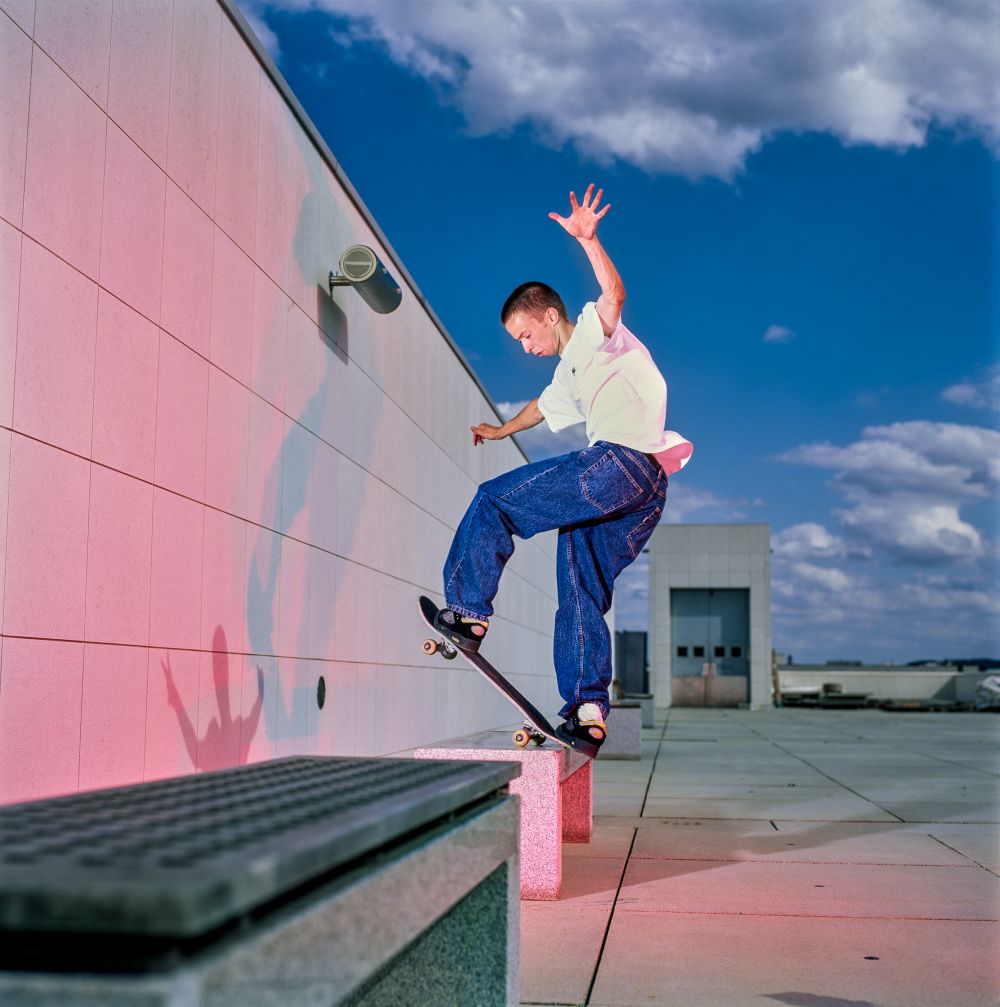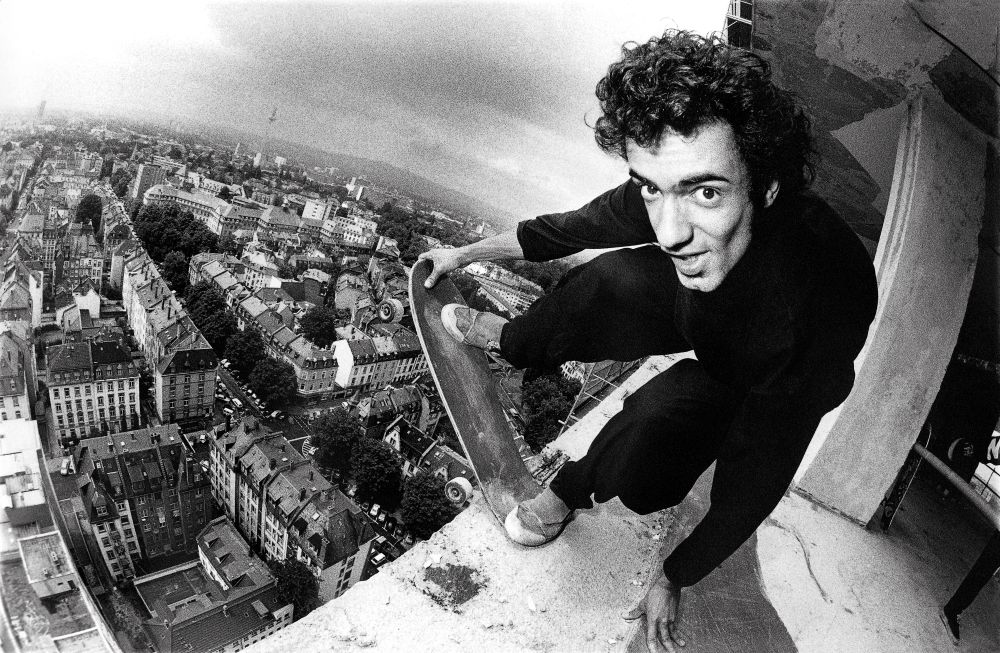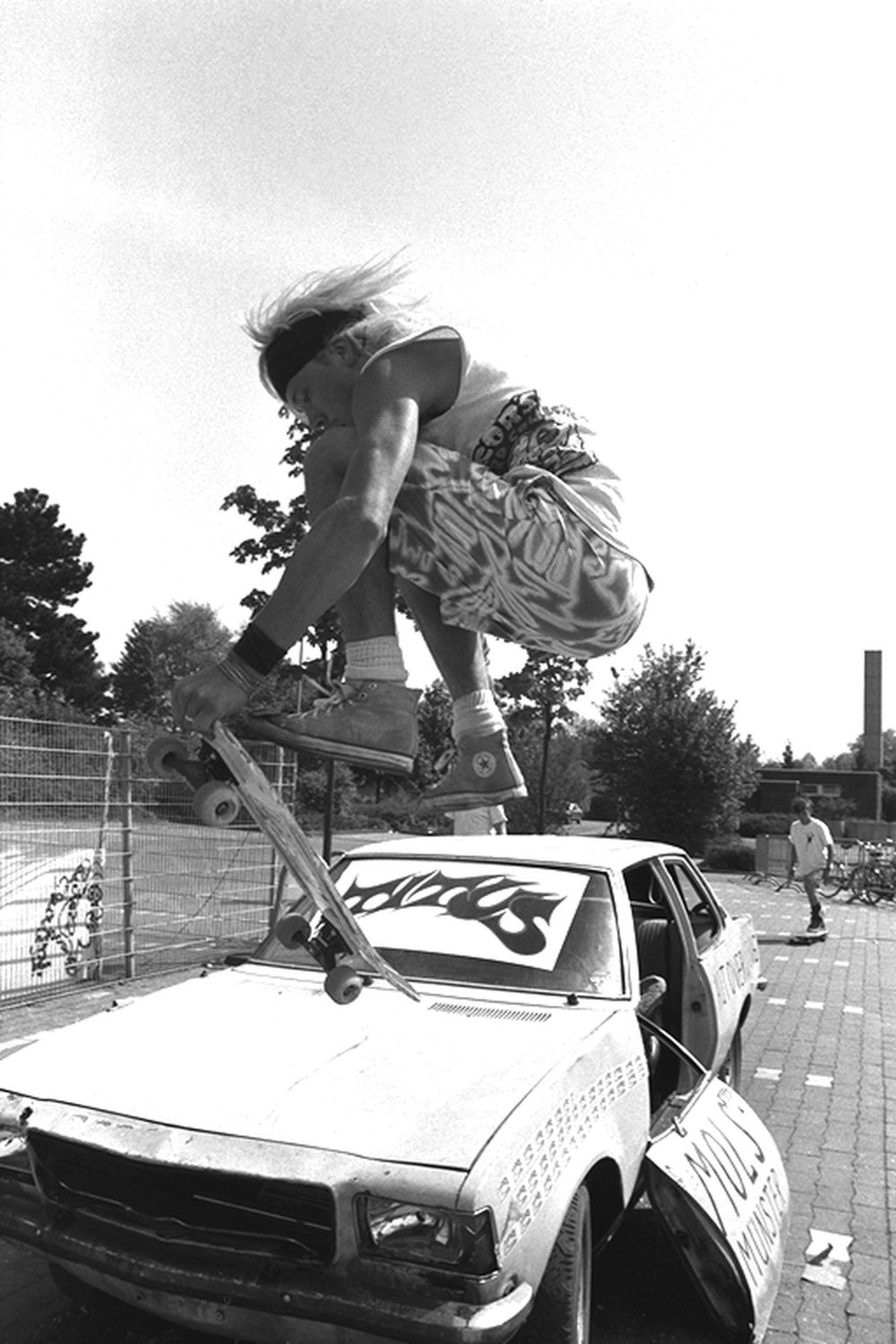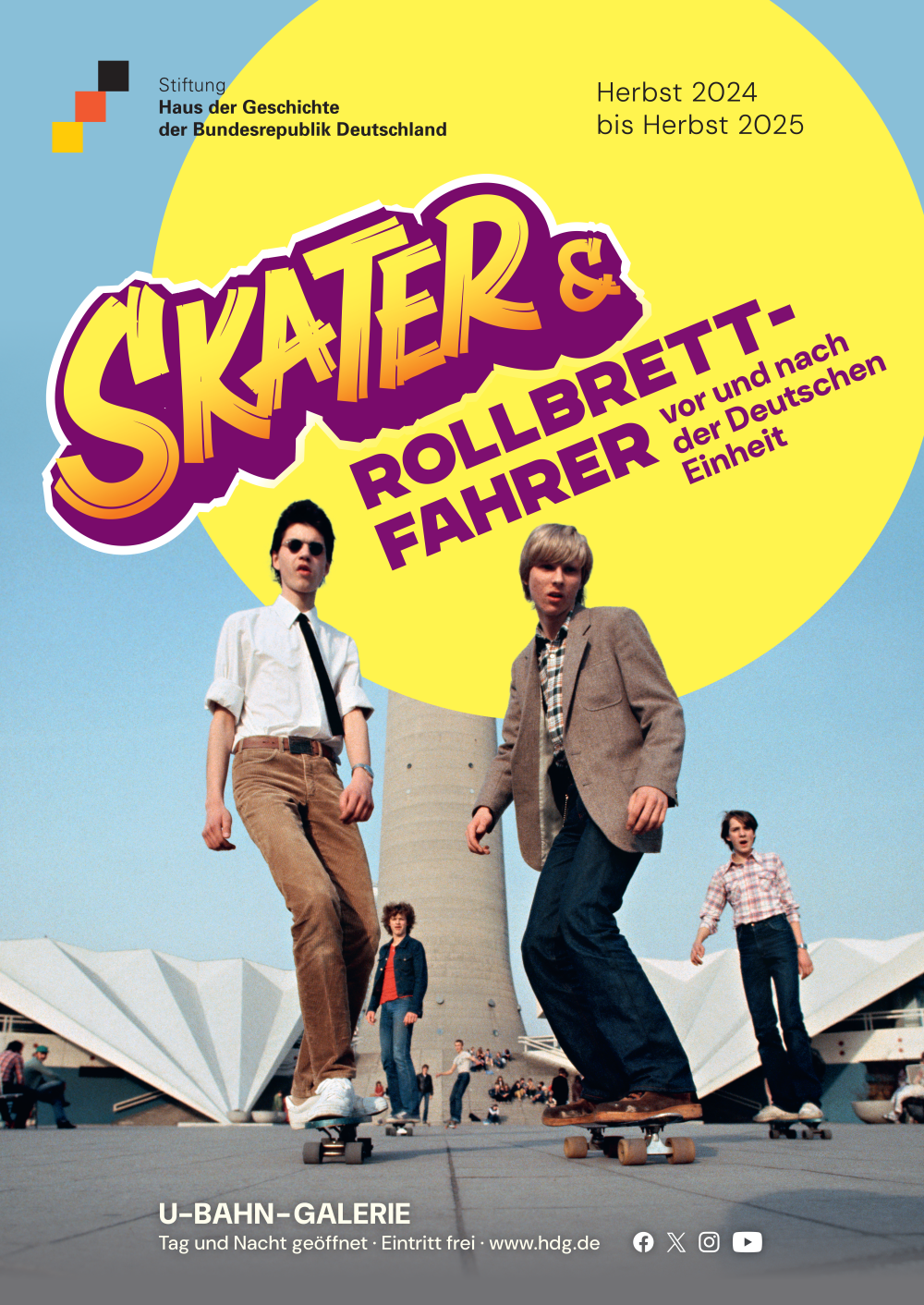
Skateboarding is not just a sport, it is also a lifestyle. It combines risk, rebellion and coolness. Since the 1980s, skateboarding has been part of the youth culture in West and East Germany. In both German states, skaters are initially looked upon with scepticism. In the GDR, they are often called “roller board riders”. As professional equipment is hard to come by, they have to improvise. For a long time, most skateboarders are male, which is also reflected in the way it is portrayed in the media.
The exhibition features photographs by Helge Tscharn, Thomas Kalak and Harald Schmitt. In the 1980s and 1990s, the three photographers capture the skaters’ tricks, their urban surroundings and the reactions of the spectators.
Helge Tscharn is a skater himself and has been photographing the scene all over Europe for the “Monster Skateboard Magazine” since 1982. Thomas Kalak is a co-founder of the magazine and a professional skater in the early 1980s. Their images show how skaters are reclaiming urban spaces and using them in new ways: Monuments, empty buildings and historical sites become the stage for their tricks. Harald Schmitt photographs young skaters in East Berlin for the magazine “Stern”.
The creativity of East German skaters is demonstrated in the exhibition by a self-made skateboard. A hobbyist uses the only skateboard produced in the GDR as a model. This model is criticised by skateboarders as barely usable. Donald Campbell has been producing skateboards professionally in Düsseldorf since the 1980s and sells them in his shop. In the exhibition you can also see a board that he has been travelling with to numerous skate parks since 1984.
Insights
